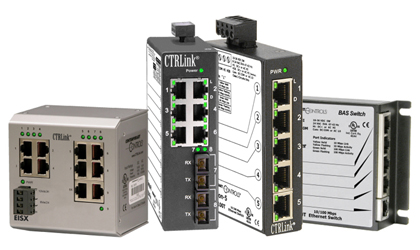Control Network Newsletter

Can You Use Unmanaged Switches with RSTP?
 Customers often ask interesting questions and we do our best to provide the answers. One frequent question concerns redundant Ethernet networks and unmanaged switches.
Customers often ask interesting questions and we do our best to provide the answers. One frequent question concerns redundant Ethernet networks and unmanaged switches.
An unmanaged switch allows Ethernet devices (such as a PC and a network printer) to communicate with one another. They are typically "plug and play" devices that operate right out of the box and automatically configure their data rate and duplex using the auto-negotiation protocol. However, they have a fixed configuration. Managed switches provide all the features of an unmanaged switch plus provide the ability to configure, manage, and monitor your LAN. This gives you greater control over how data travels over the network.
An important feature of a managed switch is redundancy. Redundancy provides the ability to safeguard a network in case a connection or cable fails by providing an alternate data path tor traffic. Managed switches utilize the Rapid Spanning Tree Protocol (RSTP) to identify and quickly recover from network changes or failures. RSTP allows redundant paths by preventing multiple active paths between switches that can create network loops.
Our newly published instruction sheet discusses the RSTP concept and presents examples of networks containing a mix of managed and unmanaged switches. The pitfalls of using this architecture are discussed and examples provided.
The Contemporary Controls CTRLink family of switches offers a wide array of managed and unmanaged Ethernet switches to meet all your needs.